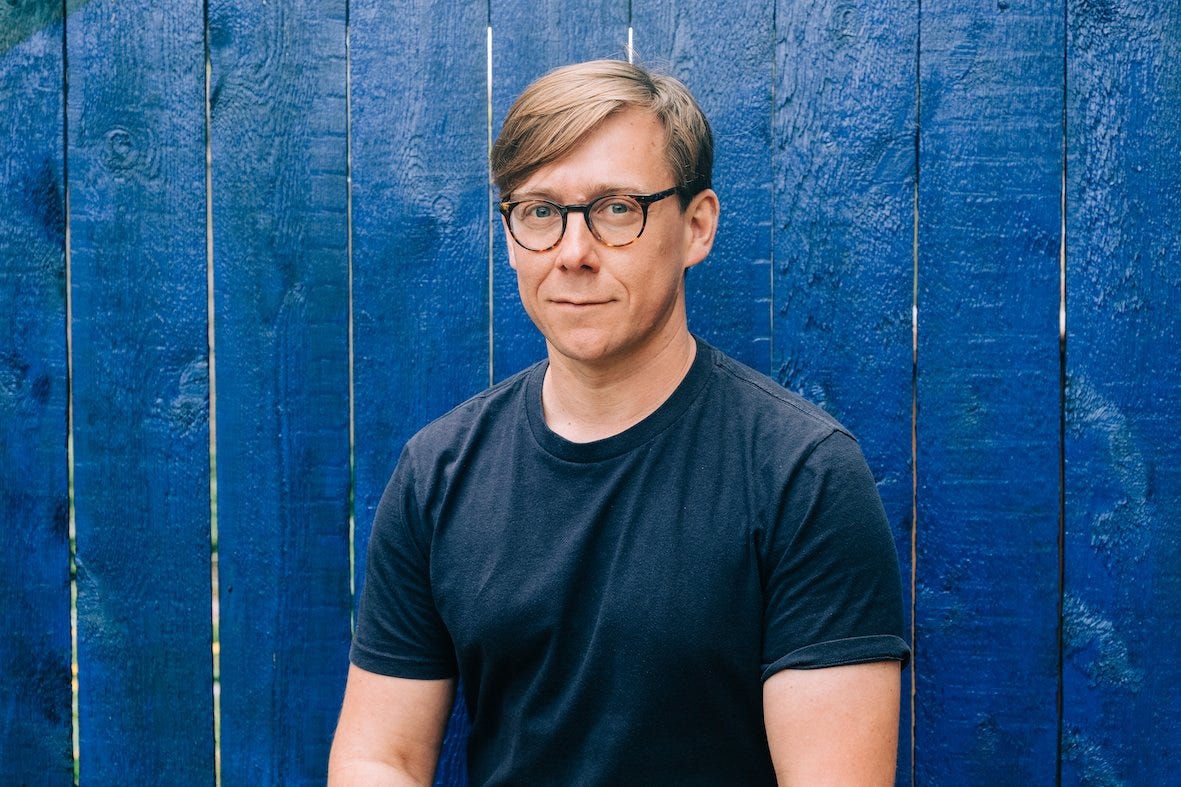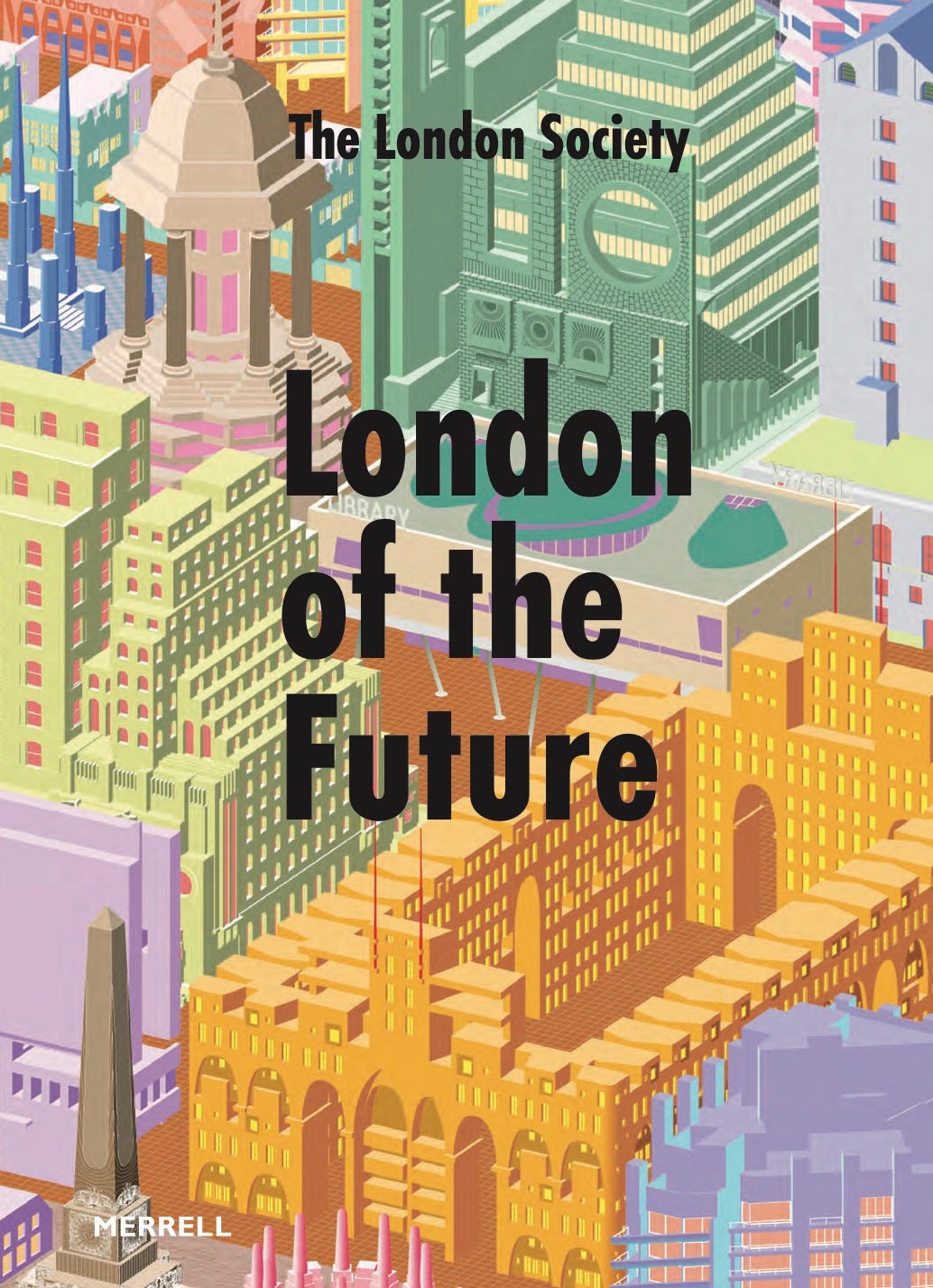A couple of years ago, writer, editor and communications consultant, Rob Fiehn, discovered a hundred-year-old book published by The London Society that attempted to predict the future of London though a collection of essays. The book suggested such bold and innovative ideas as a city-centre airport and something called a ‘channel tunnel’; but it also attempted to tackle some of the big concerns of the day, like pollution, housing and access to public space.
Rob has now taken on the challenge of publishing a follow up to that book by asking a new set of experts how they think the city could and should improve over the next century.
We talked to Rob about how the new version of London of the Future picks up on some of the topics from the original, as well as how it tackles some particularly 21st Century issues, and how predicting the future of London can help us better understand the one we’re living in right now.
Hi Rob. Before we get into talking about your book, we have to ask you the same question we ask everyone: What’s your relationship to London?
I am a born and bred Londoner. I was raised in South West London, in Putney. But instead of changing cities or countries like some people do, I tried out different parts of London. I’ve lived in South London, North London, West London, and now I’m in North East London. That’s my amazing migration, all while staying in the same place!
I think I’ve settled in North East London because the people are very friendly and we’re quite close to Epping Forest, so even though we’re in an urban area you don’t have to travel very far to be amongst woods and fields.
What’s your background? How did you arrive at this point where you’re trying to predict the future?
I used to edit books about architecture, and that has slowly morphed into more of a communications job where I write about architecture and work with a lot of architects to promote their work. I also work for architectural institutions for their cultural programs. For example, I work with the Building Centre, which puts on a lot of exhibitions and events.
You’re a trustee of The London Society, which is publishing this book. Can you just explain a bit about what the London Society is and what it does?
The London Society was founded in 1912 by the famous architect Sir Edwin Lutyens, along with bunch of other important planners and architects. They basically wanted to help steer London to be the best city it could be. They would advise the government and they would gather people together to discuss the city.
I guess we do much the same thing now, although it’s a bit more events-based today. We have lots of tours and talks and things like the planning school, but basically, we’re trying to demystify how London works.
A lot of our members and people who come to our events are not necessarily professionals, but they’re hearing from professionals, so they’re getting a real sense of the ‘behind the scenes’ of London. Hopefully we’re a kind of bridge between professions like planning, engineering and architecture, and the public
Tell us a little bit about the original London of the Future book. How that came to be and what it was trying to do.
A couple of years ago I found out that there was this book, London of the Future (above), that had been published in 1921. The Society had already taken on this role of trying to promote good ideas, but back then they didn’t have Zoom obviously, or that many public-facing events for that matter. So, they thought a book would be the best way to bring together a whole bunch of ideas about what London could and should be.
They gathered together the great and the good of the time and each of them took a topic and wrote an essay about it. Many of them were advocating for things, for example an underground train that would take you from London to Paris! Or some kind of ‘green belt’ that could go around the city.
It was a pretty visionary book (although a few of the essays are just people moaning about pollution) and we really liked that eclectic and collective approach they’d taken. We’ve tried to pick up on that and get people from different backgrounds to talk about their specialisms in the new version.
You’re not necessarily trying to predict the future with this new book, are you? It’s more like you’re asking people what could and should happen over the next 100 years.
What we asked people to do is write about what London should look like in a hundred years. But everyone has taken that brief in a different way, so it’s a real mixed bag. Some of the contributions are dire warnings that are saying, ‘if we continue down this path then this will be the end result and it’s not good’. Whereas other people are saying that there’s loads of opportunities and this is what we could be doing to make London regenerative, or to feed the population, or to have better governance.
I’d say it’s broadly hopeful and some of it is a bit tongue-in-cheek too. For example, one of our authors asks the question ‘What will happen to the City of London?’ and one of the potential futures she outlines is the idea of the City becoming a Venice-style tourist attraction. It stops becoming a financial hub and instead becomes a place where people go on tours to look at the old buildings and say things like “Can you imagine people used to run businesses from here?”.
She’s also considered what would happen if everything was turned into luxury flats. Because, you know, that could definitely happen too.
But all these things aren’t necessarily things that the author wants to happen or is advocating for. It’s more a case of saying that they could happen and let’s just enjoy the process of prediction.
What do think people will get from this book? Why should people buy it and read it?
If someone reads this book then they’ll find out a lot about the London of today and the London of the past, because in order to explain the future you have to set the groundwork. So, hopefully this is not a collection of pie-in-the-sky ideas and you will learn a lot about the London we have now by reading it.
I would put money on the fact that there is nobody in existence who knows everything that will be in this book, because it is so eclectic. We’ve got Carolyn Steel writing about the relationship between food and the city, Anna Minton writing about housing, Kat Hanna talking about the City of London, Mark Brearley on high streets… So, I think anyone who reads it is going to find out a lot that they didn’t know about before.
Have you noticed any trends or patterns in what people have written? Any subjects cropping up again and again?
We haven’t had a lot of ‘capital projects’ ideas. In the last book they were advocating for things like another bridge across the Thames and that kind of thing, but we haven’t seen much of those big, shiny ideas.
I think that’s indicative of a new way of thinking about cities. We don’t need more glossy icons because that’s not where the urgent need is. But what we do need is to change ways of thinking and to figure out what we do with the London we’ve got now. How do we adapt it and how do we preserve it? It’s not necessarily about constantly building and expanding; it’s about making things better.
Retrofitting and refurbishment has come up a lot in the book. A lot of different people from completely different perspectives are all saying that we’ve got to work with what we've got, because we can't really afford the carbon bill that comes with knocking stuff down.
Tell people how they can get hold of the book and how they can support the publication.
We’re funding through pre-sales right now, and there’s also various tiers so you can get extra goodies. We’re thinking about releasing some limited edition prints of the amazing illustration that was created for the front and back of the book by artist/architect/designer extraordinaire Adam Nathaniel Furman.
Adam has this amazing ability to take history and extrapolate heritage and these buildings that we all recognise, and then turn them into these kaleidoscopic landscapes that feel quite sci-fi. And I think that’s what The London Society is supposed to be about. It’s about valuing the past, but looking to the future and trying to hold those two things together.
You can pre-order London of the Future via the Crowdfunder page.
You can follow The London Society on Instagram or Twitter.
And you can follow Rob here.
5 little bits
Former Met deputy commissioner Sir Stephen House is to be investigated after a Home Office adviser told Channel 4 News that House used “a term to describe what he thought the bulk of the rape complaints were, which was the term ‘regretful sex’.”
The four-storey high, 3.5m wide ‘leaning tower of Rotherhithe’ has sold for £1.5m.
The building used to belong to a firm of barge builders who refused to sell the place when London County Council bought all the other houses in the row in the 60s. In related news: it doesn’t look like Boris is going to be heading to Dulwich anymore.
Norwegian royalty visited ‘Brixton Beach’ skatepark last week. Apparently The Crown Prince and Crown Princess of Norway were there because the skatepark “was created by a Norwegian specialist design and construction agency”.
Another ‘David and Goliath’ business name war is brewing. This time it’s Brixton’s family-run vegan cafe, Blank Coffee versus American behemoth, Blank Street Coffee (which is increasingly everywhere).
The playgrounds in Crystal Palace Park and Leyton Square in Southwark have been named “London’s saddest playgrounds” by children’s charity London Play (they’re not just throwing playground shade, they are doing it to “raise awareness of poor play facilities in London”).





